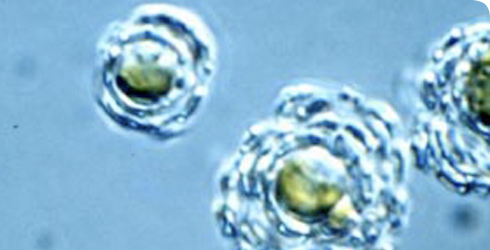Evolution
Emiliania huxleyi coccoliths appear in the fossil record only 240-280,000 years ago, in Marine Isotope Stage 8 (Thierstein et al. 1977). Although the first occurrence can be hard to place since the coccoliths are small and initially only present at low abundances, it is has been reliably identified in over 25 well-dated sediment cores from around the world and consistently occurs within this interval (Raffi et al. 2006).
E. huxleyi coccoliths occur at subsidiary abundances until the last glacial interval (MIS2-4) when they increase in abundance. They typically dominate assemblages from the Holocene (MIS1).
The recent first occurrence makes E. huxleyi the youngest coccolithophore species for which we have a reliable fossil record, as well as the most abundant and ecologically widespread species.
The fossil record, however, indicates that E. huxleyi is merely the latest of a succession of closely-related species which have occupied a similarly dominant position in coccolithophore assemblages. For example Gephyrocapsa caribbeanica dominates fossil assemblages globally during marine isotope stages 14 to 8, 480-260,000 years ago (Bollmann et al. 1998).
One suggestion for this succession of short-lived dominant species is that co-evolution of coccolithophores and their associated viruses is driving rapid evolution in the dominant coccolithophores (Emiliani 1993, Smetacek 2001).
